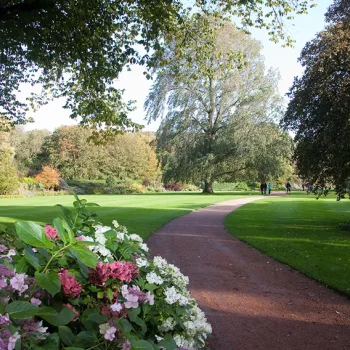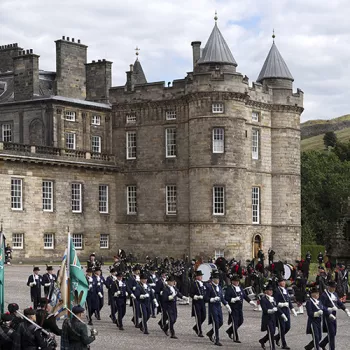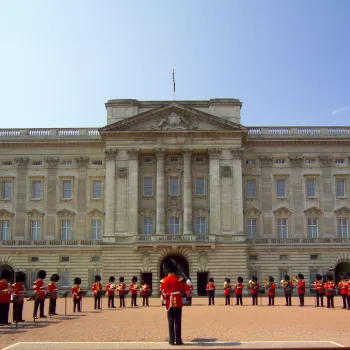The History of Abbey Strand
For hundreds of years, some of Edinburgh's most colourful characters have passed through the doors of the Abbey Strand buildings - from medieval monks and royal courtiers to brewers, as well as debtors hiding from the law.
The Abbey Strand is the small area around the Palace of Holyroodhouse leading up to the Palace gate. Today the restored buildings are used as a Learning Centre, providing spaces for school groups, families and adults to learn about and engage with the Palace and the Royal Collection.
Five centuries of history
Abbey Strand has had all manner of uses throughout its colourful history. The oldest section was built as part of a group of buildings connected with Holyrood Abbey around 1490 and may have been the Abbot's Mansion. Throughout the medieval period, its main purpose was to provide welfare for the local community as an almshouse, offering accommodation for poor or elderly people, and later as part of the hospital of St Leonard.
In 1541, while still owned by the hospital, the building was used by James V as a weapons store during preparations for the ill-fated campaign against the English that would result in defeat at Solway Moss. Two walls had to be removed to accommodate 3,500 pikes and 500 halberds (both long spear-like weapons, differentiated by a wide axe-like blade on the halberd).
Just three years later, Abbey Strand was badly damaged during an English invasion, the first major action of the 'Rough Wooing', in which Henry VIII attempted to force the Scots to agree to a marriage between his son Edward and the infant Mary, Queen of Scots.
Royal lodgings
When Mary, Queen of Scots moved into the Palace in 1561, Abbey Strand was extended to provide lodgings for her large court. By the time James VI took the throne, the royal court numbered up to 600 people, and Abbey Strand was in regular use by courtiers and ambassadors. The upper floors of the building were reached from a garden to the north, directly adjacent to the royal privy garden.
After the Union of the Crowns in 1603, the court moved to London. Although royal visits to Edinburgh became rare, Abbey Strand remained a high-status dwelling.
Brewery and taverns
By the 1700s the area around the Palace of Holyroodhouse had become a place to escape the crowded city High Street and to walk, eat and, most importantly, drink. The ground floor of Abbey Strand was occupied by a brewery and a row of taverns – the Crown Inn, the Abbey Tavern and the Queen's Arms. The end of the building nearest the Palace was the home of a well-known brothel-keeper, Lucky Spence, who was immortalised by Edinburgh poet Allan Ramsay.
In the late 18th century, fashionable society had moved to the New Town, and much of the Canongate became an industrial slum. The apartments in Abbey Strand were sub-divided further at the beginning of the 19th century, and another floor was added, providing homes for up to 25 families.
Debtors’ sanctuary
Abbey Strand was also well known as a sanctuary for debtors. Until imprisonment for debt was abolished in 1880, debtors who stayed within a five-mile circumference of Holyrood Abbey were protected from civil law and could not be arrested. They could even venture out into the town every Sunday when legal proceedings were not allowed in Scotland.
The Register of Protections for the Sanctuary of Holyrood in the National Records of Scotland names 6,502 people who claimed sanctuary within the Palace precincts between 1686 and 1880. In 1827 the novelist Sir Walter Scott considered taking refuge at Abbey Strand when in financial difficulty, and the author Thomas de Quincey is thought to have taken refuge at lodgings in the nearby Palace Yards between 1835 and 1840.
Modern restorations
During the early 20th century, the taverns on the ground floor closed and several major restoration projects followed, attempting to improve living conditions. In the 1960s the floors and ceilings were strengthened, and painted beams salvaged from Midhope Castle, which was derelict at the time, were installed. In recent years Abbey Strand has housed staff rooms, a shop and workshops.
With the creation of the Learning Centre in 2020, the story of Abbey Strand began its latest chapter. The Learning Centre is used for teaching, learning activities and lectures. Behind the Learning Centre, a new public garden was created, inspired by the earliest recorded gardens at the Palace.















